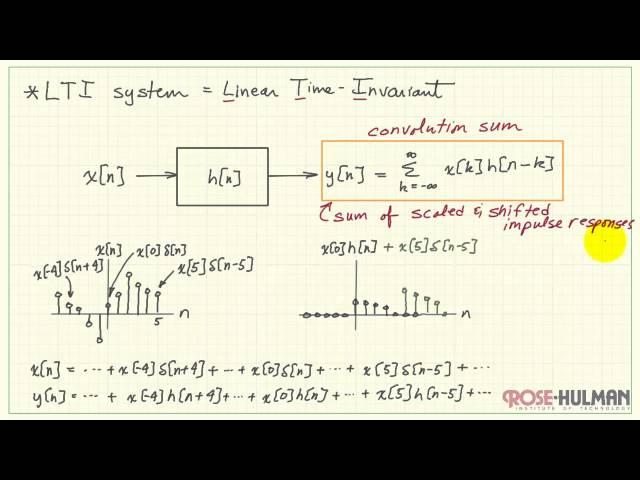Комментарии:

Tks u
Ответить
For given y(n) and h(n)
What will be input x(n)
??

Thank you so much for taking the time to help me with this!
Ответить
Wow, so this is what my textbook was trying to explain to me? I I regret spending so much time trying to decipher that load of gibberish, when I could have just watched this video instead!
Ответить
Thanks! Now that I have seen an example I understand it much better
Ответить
Thank you so much. :)
Ответить
Very nice
Ответить
nice tutorial
Ответить
I dont understand why its x[k]h[n-k] where does the -k come from why not +k?
Ответить
Thank you so much! This was reallyyy helpfull!
Ответить
elegant explanation! thank you
Ответить
Great video this is way easier than the way I learned
Ответить
OMG thank you so much for this vídeo. In 5 minutes I understood, in a much simpler way, the convolution summation. :D
Ответить
how would you multiply it , without a shift?
Ответить
This is a technique very different that what my professor taught us. A good shortcut, but I don't think my professor would be too impressed with it... Lol.
Ответить
Taking my DSP Lectures this year and this helped me a lot! Too bad my professor cannot really explain this well. Thank you very much Rose-Hulman. Cheers from the Philippines
Ответить
helps a lot! thx
Ответить
Thank you so much for those videos! I passed my exam only thanks to those (it's not really my field as I study IT)! It also helped a lot of my friends.
Ответить
good video, thank you
Ответить
right picture: delta or h [n-5] ?
Ответить
Thank you so much
Ответить
Reply to Trần Hồng Phúc: The two formulas are equivalent: your equation (Xmax+Hmax) - (Xmin+Hmin)+1 = (Xmax-Xmin) + (Hmax-Hmin) +1 = (Xmax-Xmin+1) + (Hmax-Hmin+1) - 1 = Xlength + Ylength - 1 = equation in video.
Ответить
This video solved my 1 year old problem
Ответить
Your tutorial is very understandable and usefull,but, your fomular for calculating the length of y is only right in this case, the others will be wrong. Could you take look again?
Ответить
Generally, the length of y =(max index x+max index h) - (min index x+min index h) +1
Ответить
The method shown here is based on what physically happens with the system. Each input sample triggers its own scaled and shifted (delayed) impulse response, and these are all added together to form the output. Look particularly at 7:42, and you can see the effect of the delay in the argument for h, it appears as h[n-1]. The other method that you are thinking about ("flip and slide") is based on the convolution sum equation; the delay shows up as negated time index (k) and that's why h must flip.
Ответить
Is there a reason that you did not need to flip the LTI system (H) due to the negative sign infron of the k in h(n-k) ??? Please let me know as I am confused
Ответить
it was really easy to understand, besides, the method introduced in the example is really convenient.
Ответить
Wow. Discrete convolution is a lot simpler than continuous.
Ответить
Amazing video! Was of tremendous help! Thank you :)
Ответить
Chuck Norris is drawing this graphics.
Ответить
Thanks very useful XD
Ответить
nice video...good job helped me a lot
Ответить









![[World Record] Parasite Eve The 3rd Birthday Any% NG 2:09:23 [World Record] Parasite Eve The 3rd Birthday Any% NG 2:09:23](https://invideo.cc/img/upload/Y2tWTUNEMFlHVUw.jpg)
















